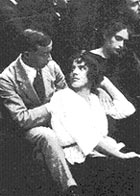Eastern Europe

The rediscovery—and recovery—of Eastern Europe are central elements in contemporary Jewish culture. Ultra-Orthodoxy tries to maintain versions of Eastern European dress, speech, and mores. The theology of Abraham Joshua Heschel, the melodies of Shlomo Carlebach, the sound of klezmer, the literary productions of authors as disparate as S.Y. Agnon and Jonathan Safran Foer: all in their distinct ways seek to find, in the murdered world of Eastern Europe, a source of living energy for the present.
Not all succeed, and only the best display a grasp of the sheer complexity of the civilization they mean to retrieve and/or to reconstruct. In one impressive recent study, large swathes of Czarist-era Jewry turn out to have been far more integrated into Russian society than hitherto believed; in another, 19th-century hasidic masters emerge as politically much shrewder than their other-worldly image would suggest.
Eastern Europe's past was being re-imagined well before the Holocaust. The heder, the one-room school denounced by 19th-century proponents of Enlightenment as a breeding ground of superstition and ignorance, was by the turn of the 20th century being eulogized by intellectuals who looked back upon it with a sense of irretrievable loss. After the carnage of World War I, figures like S. An-sky set out to record a rapidly vanishing society. The founding in Vilna of YIVO in 1925 reflected a similar impetus to preserve and memorialize. After the incomparably greater devastation of World War II, YIVO reconstituted itself in New York; in 2008, it published a massive encyclopedia depicting the history of Eastern European Jewry in all its density, intricacy, and diversity.
YIVO's last days in pre-war Vilna were indelibly recorded by a then-young researcher, Lucy S. Dawidowicz, whose extraordinary memoir of that time and place was republished last year. Later to be known mainly as a historian of the Holocaust and of American Jewry, she was also a keen and lucid observer of Eastern Europe and the distortions that even loving memory can bring.
Comments are closed for this article.




